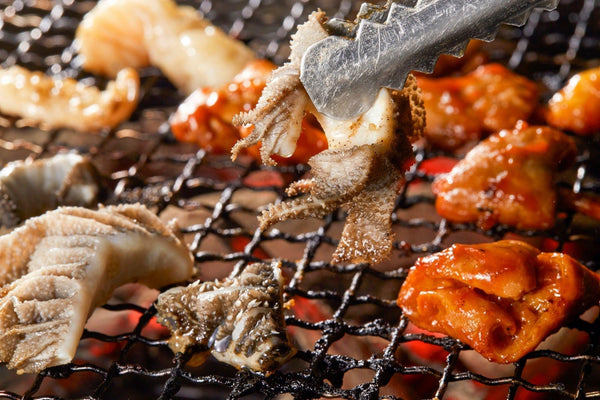
Jump to:
To say that Japanese people love a good barbecue would be an understatement.
Different forms of barbecue can be found across japan, from the Korean-inspired and ubiquitous Yakiniku barbecue, to grilled tongue specialty restaurants and other forms of charcoal cuisine.
One of the more popular barbecue experiences in Japan is called “Horumon.” The word Horumon refers to the offal meat of a cow or pig – the intestines, kidneys, heart, etc. Horumon is often served in specialty barbecue restaurants across Japan – having originated in the Kansai region nearly a century ago – and is served in other forms such as stews and noodle dishes.
Often referred to as offal in English, Horumon encapsulates a proud Japanese culinary tradition deeply rooted in resourcefulness and a commitment to avoiding wastefulness. In this edition of the Japanese Taste blog, we’ll explore the unique flavors, textures and cultural significance of Horumon.
Demystifying Horumon: Unveiling The Offal Experience
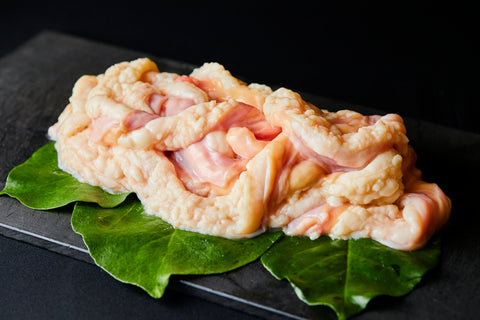
Horumon represents a collective term for edible offal or organ meats. This is indeed a testament to Japan’s culinary resourcefulness.
The concept of Horumon is steeped in the concept of "mottainai," which literally means “it’s a shame” or “that’s wasteful.” Waste is viewed with disdain in Japanese society, as people here are determined to minimize the byproducts of consumption.
In Japanese cuisine, this means the necessity of utilizing every part of an animal to avoid unnecessary waste. Although animals are eaten, they are also revered, and it’s said to be a tribute to the animal not to waste any parts but rather to eat everything that’s edible. Horumon, therefore, is not just a culinary choice; it's a cultural statement, an embodiment of Japan's respect for nature's bounty – and to the commitment to maximizing utility and minimizing waste.
Venturing into the realm of Horumon is a unique experience that’s off-putting for many first-time visitors to Japan. But it’s a rewarding journey for those who venture forth.
The inherent richness and complexity of organ meats offer a sensorial adventure, challenging preconceived notions about taste and texture. From the chewy resilience of heart to the iron-infused richness of liver, Horumon beckons to those willing to embrace its distinctive character.
Tracing The History Of Horumon
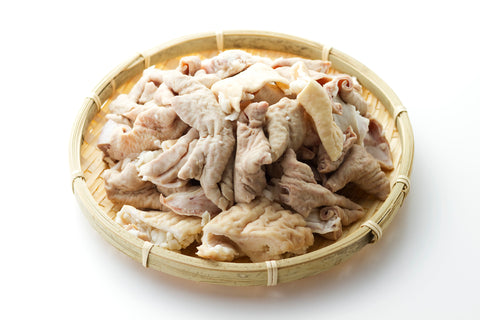
The story of Horumon unfolds against the backdrop of Japan's agricultural past, where communities cherished every aspect of the animals they raised.
In its early days, Horumon was a humble fare, born out of necessity and practicality. The evolution of Horumon cuisine mirrors Japan's transformation into a modern culinary culture, where traditional techniques meet contemporary innovation.
Early Beginnings: Horumon in Rural Japan
In the rural landscapes of ancient Japan, Horumon emerged as a resourceful way to utilize every part of the animal, embodying the concept of mottainai – the Japanese philosophy of minimizing waste and maximizing utilization of resources.
Offal was often incorporated into simple stews or grilled dishes, reflecting the rustic nature of life in rural Japan. These early preparations of Horumon, while humble, laid the foundation for the culinary evolution that would follow.
Refinement & Evolution: Horumon Ascends
As Japan's culinary landscape evolved, so did Horumon cuisine.
Over time, Horumon preparations became more refined and complex, showcasing the ingenuity and culinary expertise of Japanese chefs. Offal dishes were no longer mere sustenance; they became culinary creations, each preparation highlighting the unique flavors and textures of the offal.
This culinary evolution transformed Horumon from a humble peasant dish into a delicacy gracing the tables of Japanese nobility. By modern times, Horumon had become a well-established part of Japanese cuisine, with specialized restaurants dedicated to preparing and serving offal dishes.
The Rise of Yakiniku and Motsunabe: Horumon in Modern Times
The 20th century witnessed the rise of yakiniku (grilled meat) and motsunabe (offal hot pot), two culinary styles that further popularized Horumon.
Yakiniku, a social and interactive dining experience, allows individuals to grill their choice of offal, including heart, liver, intestines and stomach. Of course, wagyu beef is the pinnacle of yakiniku dining, but that’s a rather different experience compared to Horumon. Sauces and condiments are key in yakiniku, and allow people to individualize their meal even further.
Motsunabe, on the other hand, offers a communal dining experience, with simmering pots of offal broth and vegetables providing warmth and camaraderie.
Offal, Not Awful: Exploring The Varieties Of Horumon
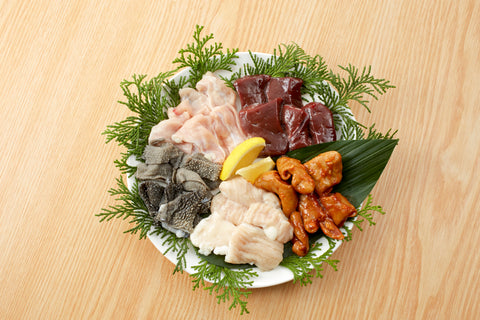
“Hatsu” (the heart) represents the resilience of muscle, offering a chewy texture that marries well with its mild flavor.
“Rebaa” (the liver) steps into the limelight with its rich, iron-infused taste – some find it too minerally, while others love its texture and flavor.
“Mino” (tripe) introduces a unique texture that’s worth getting past preconceived notions, delivering an umami punch that defines Horumon cuisine.
“Shiro” (the intestine) takes on a crispy, slightly spicy character, adding a layer of complexity to the ensemble.
Other types of Horumon or offal in Japanese cuisine include kidney, pancreas, uterus, esophagus, rectum and diaphragm, among others… truly a snout-to-tail experience.
Granted, it’s not for everyone, as many in the US and other countries are accustomed to a more narrow range of meats in more “standard” cuts. But an exploration outside one’s comfort zone will surely be rewarded in a country like Japan.
Horumon Delights: Culinary Adventures With Offal Dishes
Now that we’ve covered the “what” of Horumon, let’s move on to the “how” by exploring the various ways Horumon is transformed into delectable dishes.
Motsunabe
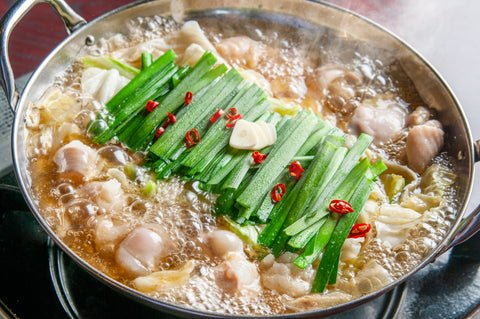
A hearty hot pot, is popular in different regions of Japan (such as Kyushu), simmering in a miso-based broth that becomes a canvas for the diverse flavors of offal. The communal nature of this dish enhances the dining experience, creating a sense of shared joy around the simmering pot.
Yakiniku
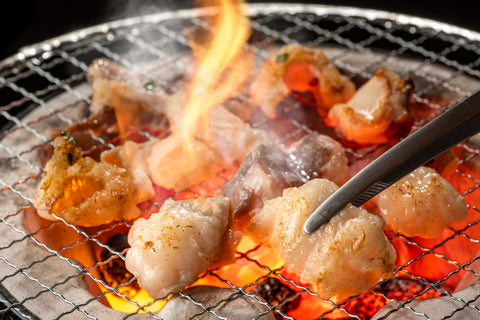
Or grilled offal, emerges as a smoky and savory affair, where the art of barbecue meets the distinctive flavors of Horumon. The grilling process imparts a smokiness that complements the inherent richness of the offal.
Horumon Yakiudon
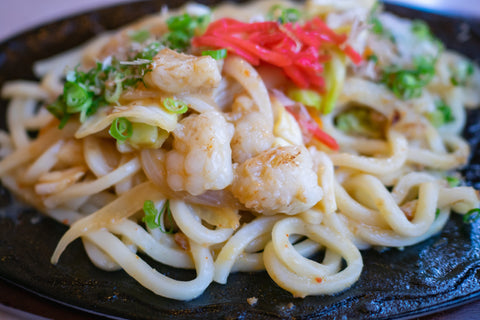
A stir-fried noodle dish, presents a fusion of textures and tastes. The chewy noodles intertwine with the savory notes of offal, creating a dish that marries tradition with modern culinary sensibilities.
Horumon Hotspots: Culinary Gems In Japan

Embark on a virtual tour across Japan, uncovering the regional nuances and specialties that define Horumon cuisine.
In Tokyo, the bustling streets host establishments where yakiniku reigns supreme, showcasing the city's love for grilled offal.
Japan’s Kansai region – with Osaka at its heart – is known for its vibrant food culture. Here you can find a variety of Horumon preparations, from barbecue restaurants to shops selling Horumon skewers, each offering a unique blend of flavors.
Venture south to the island of Kyushu, where motsunabe takes on a regional twist in Fukuoka, reflecting the local ingredients and preferences.
Each region's Horumon hotspot becomes a portal to understanding the nuances of local cuisine, an invitation to explore the cultural diversity that defines Japan's culinary landscape. Discover authentic Horumon restaurants, where skilled chefs transform offal into culinary masterpieces. From the traditional to the avant-garde, each dining establishment becomes a cultural ambassador, showcasing the depth and breadth of Horumon cuisine.
Embracing The Adventure: Tips For Enjoying Horumon
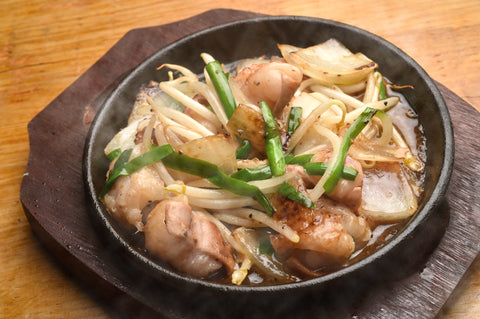
The growing popularity of Horumon among adventurous diners reflects its broad appeal in Japanese cuisine.
For the uninitiated, embarking on a Horumon adventure can be both exciting and intimidating.
An open mind becomes the greatest ally, allowing diners to appreciate the rich tapestry of tastes that Horumon presents. By expanding your culinary horizons, you can deepen your appreciation for the unique flavors and textures that Horumon offers. Japan's offal culinary heritage beckons.
Have you eaten Horumon in Japan before? What are some of your favorite (or least favorite) types of offal? Leave a comment below, and happy food adventures!


0 comments